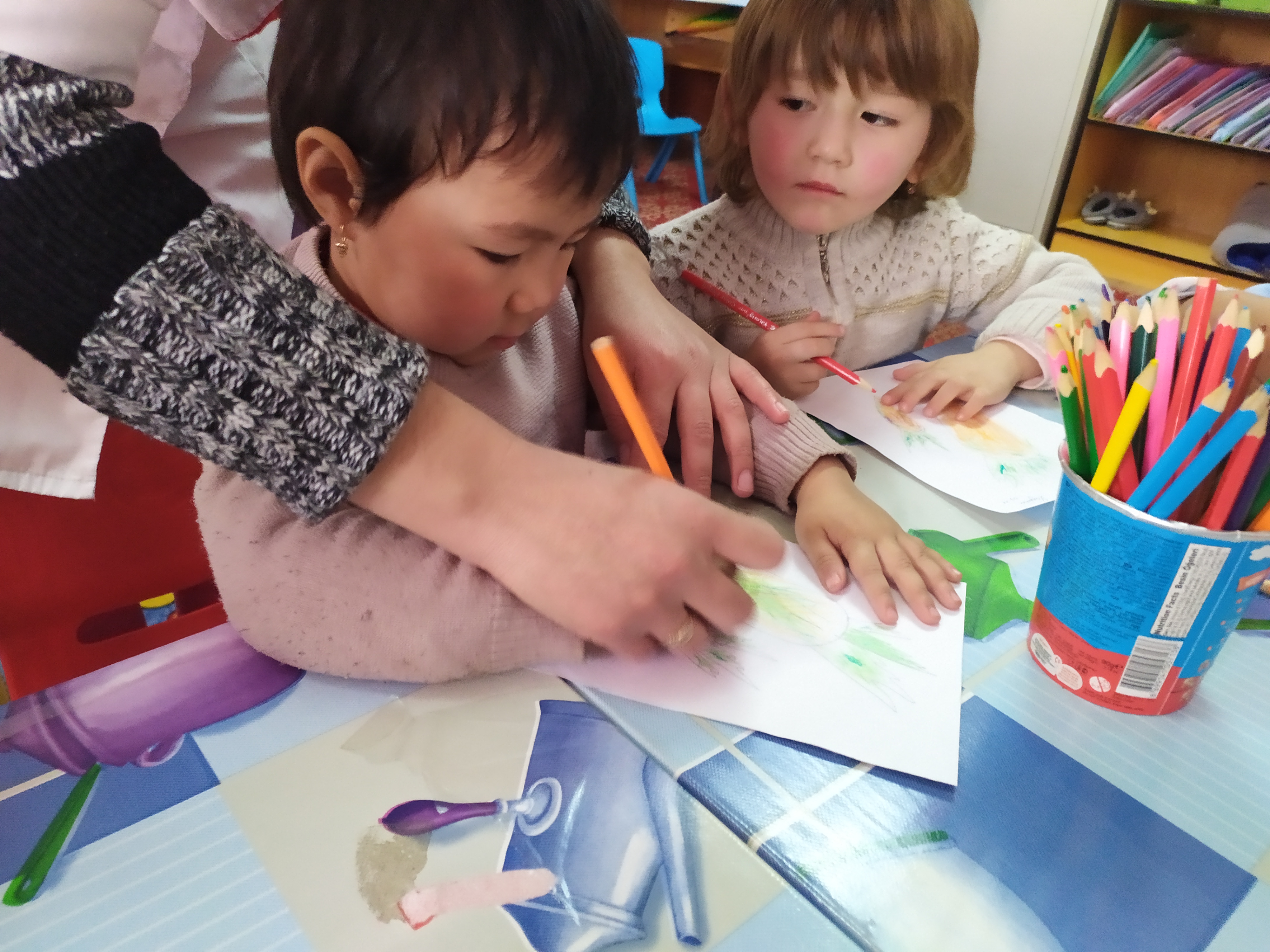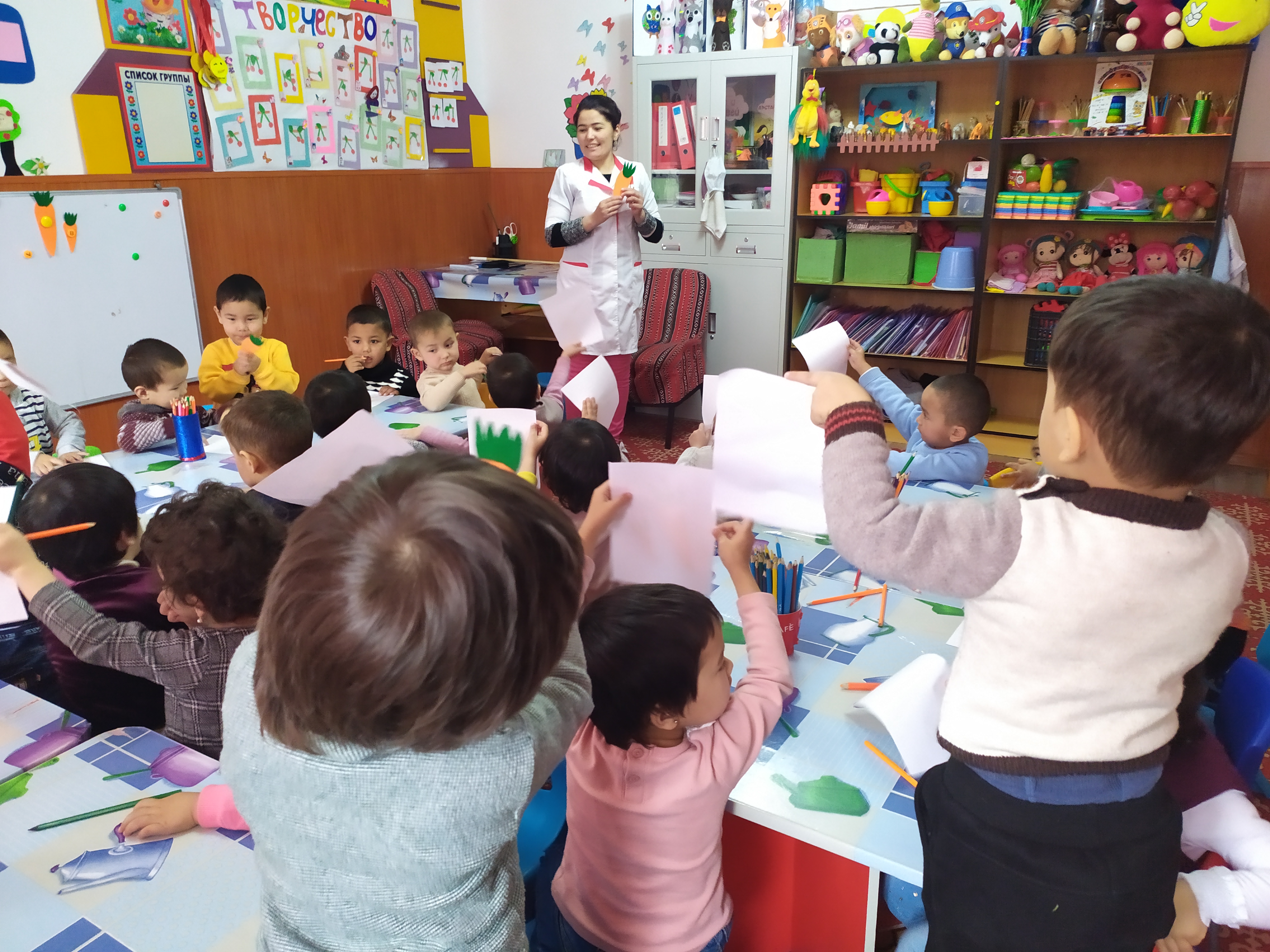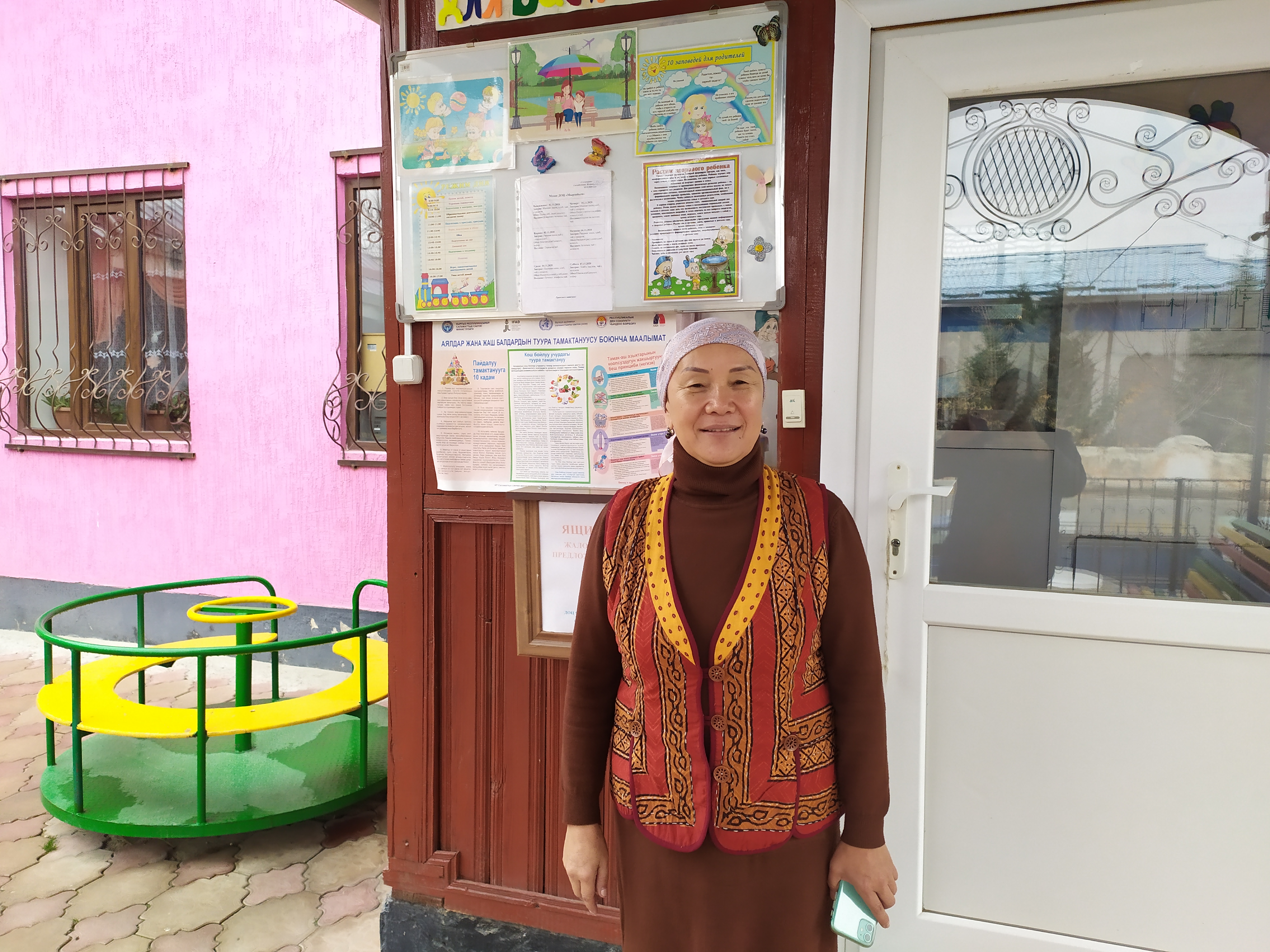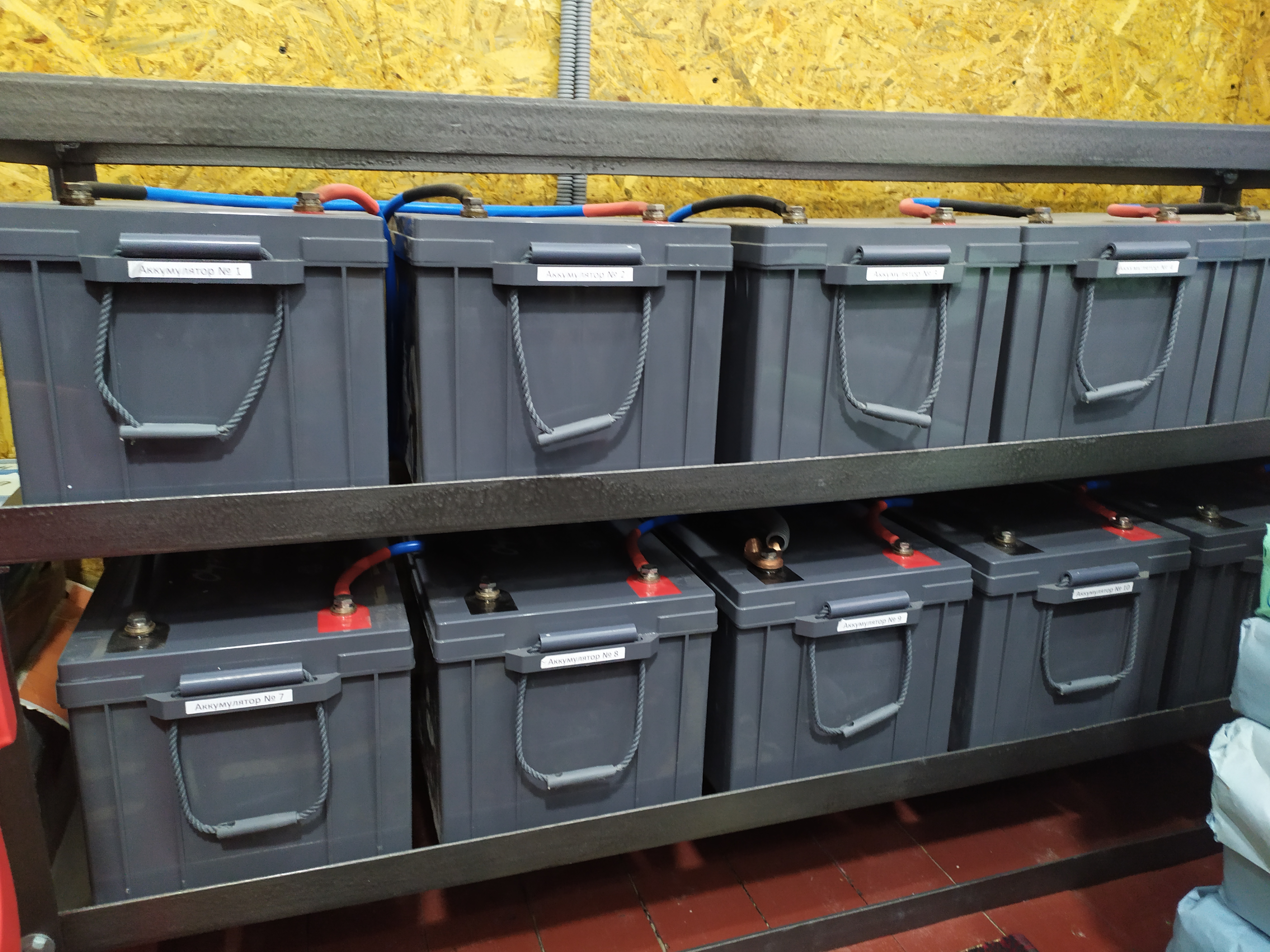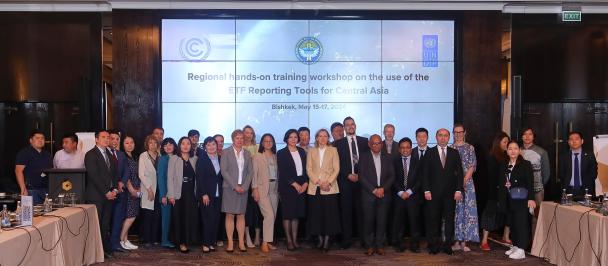Kids on a lesson in Myrzaiym Child Education Center in Isfana. Photo: UNDP Kyrgyzstan.
Myrzaiym Child Educational Center (CEC) located in the town of Isfana has become a paragon for successful application of energy-saving solutions in the Batken Oblast with the first photovoltaic power plant installed here. The up-to-date equipment has significantly improved working conditions at this CEC specially created for migrant children. In addition to child care services, the CEC provides training courses for teenagers.
The spectacular two-story building of the CEC with the walls painted in soft strawberry tones resembles a fairy-tale house. The solar collectors mounted on the roof seem rather enigmatic for the residents and guests of Isfana. The dwellers have learned to correctly use solar energy in everyday life. This energy now supports heating not only of the premises but also the souls of children and adults.
The Myrzaiym CEC, operating for the past two years, can accommodate up to 100 children. Now there are 70 young citizens studying here. The journalists came around to see one of the groups of children aged 5–6 years who had a math lesson.
“Children, what kind of figure is it?”
“Circle!”
“How many circles are here?”
“Two!”
“What sign is it?”
“Minus!”
“What will we have if we take away one circle?”
“One!”
Nargiza Tuichieva, a teacher, conducts a class for the children of local residents in Russian. She has been working in this CEC for a year and is quite satisfied with the conditions:
“There are 30 children in my group: 18 boys and 12 girls. They are here from 8:00 a.m. to 6:00 p.m. for five days. On Saturday, they stay here until lunch. The children learn, play, eat three times a day and have naptime after a delicious lunch like in a typical kindergarten. Most important, it almost feels like home in our facility. It is very cozy, warm, and children wear lightweight clothing even in the cold season. I really like the relationships between employees. The managers are very loyal and calm, it’s different from what I have previously seen.”
The Myrzaiym CEC, indeed, provides child care services similar in quality to the child care centers in Bishkek. The building has a WC facility, playground, and kitchen. All rooms, corridors, and stairs are covered with carpets.
Gulnara Derbisheva, one of the founders of the child care facility, comments on the history of how the CEC has adopted such a system in times when energy is the most relevant topic:
“We often have blackouts here. The classes were cancelled on such days. The cooking was done outside in a cauldron, so the dishes quickly cooled down. Heating was our main problem. As soon as electricity went out, the pumps that circulate hot water through radiators automatically turned off as well. It was getting cold in the building in no time. With the pumps turned off, we could not use WC facilities or draw water from the well. Eventually, our center had to suspend its activities until the electricity was restored.
Recently, the CEC has had a photovoltaic power plant installed within the UNDP Energy Access SMEs Development Project, supported by OFID and implemented by CREEED. Since then, even during blackouts, children have meals in due time, and hot water is always available.”
The power plant includes 2-kW solar panels, 12 batteries, and an inverter. The inverter serves to convert 12-volt DC to 220-volt AC used in the standard power grid.
“The best part is that the system is automated. It automatically starts with a power outage. If the electric power is insufficient, we can use solar energy just by pressing a button. Previously, when the electricity had gone out, it was getting cold in the building, so the children often got sick. Their parents were outraged. To prevent children from getting sick, we decided to install floor heating systems.
Myrzaiym child care facility has three groups for children: nursery, intermediate, and preparatory groups. In the intermediate group, we got acquainted with children who were enthusiastically drawing pictures. One of them, a four-year-old boy Mezgil, is proudly showing an album sheet with the result of his efforts.
“What have you drawn?”
“Carrot!”
“Well done!”
Mezgil's father and mother are working in Russia. The child is being brought up by his maternal grandmother.
We have asked how often the classes are conducted in Russian for those pre-school children whose parents left their homeland in search of a better life. Eventually, there was a reason for creating an educational institution of this type here. Gulnara Derbisheva, head of the center, tells us about topical problems to be solved:
“As our center has been established specifically for migrant children, we conduct lessons in Russian as requested by their parents. They are all planning to take their children to Russia in the future. I tell them ‘That’s not the goal you should set for yourself! Don't even think about it. We do not raise future migrants. We provide education. We encourage them to learn other languages.’ Therefore, we also provide in-depth English lessons. In my opinion, it would be nice if children learn Turkish and Chinese along with English. We will definitely have more opportunities in the future. It’s a well-known fact that the Batken Oblast takes first place by the number of migrants who went to work in Russia. In almost every third family with children, one of the parents — sometimes both of them — work abroad. In most cases, they leave their kids with grandparents, sometimes with other relatives, so that children do not distract them from earning money. This mainly affects preschool children. Citizens who care about the future of such boys and girls offered us to open a kindergarten. They had been concerned that the waiting list for admission to state preschool institutions was too large, therefore, children had to stay at home all day through. Following this proposal, with the support of our compatriots living in Russia, we built the second floor for the resource center and re-opened the building in 2017.”
It is worth noting that the Myrzaiym CEC conducts classes on topics related to achieving the objectives of the migration policy of the Kyrgyz Republic.
“The population of Isfana is multinational. Young representatives of 8 nations aged between 1 and 14 years attend our center. We offer kindergarten program for the little ones. Special two-hour lessons are conducted for another category of students from 7-year-olds to teenagers. Along with language courses, they learn public speaking and leadership, as well as the basics of volunteer work. Since we are a social center, the fees are not high. Adult relatives pay a nominal monthly fee of 2,000 Kyrgyzstani soms. These funds are enough to cover the salary of teachers, catering for children, and utility bills.
The main purpose of such lessons is not to prepare children for migration, but to open new opportunities for them. We read interesting books for the younger generation. We encourage adults to read books for children at home. Unfortunately, not all adults support our aspirations... But we diligently remind them about the importance of education and the desire to broaden the horizons,” says Gulnara Derbisheva, the head of the Myrzaiym CEC.
She also adds that they are planning to open a library and a co-working space for teenagers, where they can gain leadership, debating, and critical thinking skills, as well as learn how to navigate the world of information technologies.
The installation of the photovoltaic power station demonstrates that simple solutions can be innovative for the population, significantly improve the quality of life for children, set a positive example, and open up opportunities for development.

 Locations
Locations